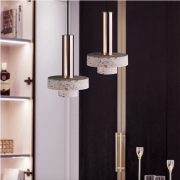Siding and sheathing go hand in hand, do they? Then what factors make the difference? Home construction is time-consuming, and arranging materials to protect the foundations, roofs, or walls against the elements needs additional focus, while the aesthetic presentation is another consideration. The article is to learn about the facets that make them different yet dependable on each other.
Investing in high-quality materials makes your home a comfortable place to live in. Glancing at what material benefits the most highlights the importance of siding and sheathing in construction. Similarly, in what order do they make the house look per taste?
What is the Difference Between Siding and Sheathing?
From a broader perspective, siding and sheathing are outer casings or panel boards embracing the inner framework of residential or commercial buildings and preventing bending. What makes them different from each other is indeed noteworthy.
Purpose
Siding aims to provide a remarkable and elegant look to the construction. Although it does play its part in shielding the outer side from the elements or unwanted pests, how much protection is obtained depends on the quality of the sheathing. Also, resistant to rotting and moisture and add enhancement to the exterior.
On the contrary, sheathing is the construction material to make the building resistant to extreme weather or serves as an insulation barrier to combat external temperatures. Another vital function of sheathing is providing enough foundation to install the siding of choice.
Note: Sheathings are added before installing new panels of sidings; if the requirement is replacing the sidings only, sheathings are not needed.
Placement
Siding and sheathing are two different terms of the same category. How? The outer protective coverings only differ in placement.
The siding is the last, or finished covering, on the house’s exteriors and is attached after the placement of sheathings. Many types of sidings are in the market, like vinyl, brick, stones, cement, or metal. Each has its pros and cons and is selected per weather conditions.
Where do you use sheathing? The foremost layering of the frame construction is sheathing. The essential purpose is to provide a nailing base to ensure the pasting of other protectant coverings for completion.
Types
Siding is named after its specific type of material, and each type possesses different characteristics. For example, vinyl siding is known for its durability, easy installation, and many colors. Other types of siding are:
- Wood siding
- Brick veneer siding
- Synthetic stone siding
- Fiber-cement siding
This specific type of siding is also famous by the name Hardie plank. If extracting the durability out of all types of siding, Hardie board siding is the most long-lasting, so hanging things on Hardie board to embellish the exteriors of the house will always be worthwhile.
The difference is only completed by mentioning the basic types of sheathing. Thus, the two types serve different purposes in construction.
- Structural Sheathing
Do you want the structure to remain intact and never lose its shape? If yes, the structural sheathing material is the one to get your hands on. It prevents buildings from bending or deforming.
2. Non-structural Sheathing
How about fixing the non-structural sheathing to maintain the inside temperature at optimum levels? Before considering any construction remember to install the sheathings to combat weather conditions. In a nutshell, non-structural sheathings serve their best in offering excellent insulation.
Materials
Sidings consist of vinyl, plywood, fiber-cement, and wood. If the matter is attaching the siding that goes well with the sheathing, choose the metal, plywood, and smart side siding. The reason for the perfect combination is that the adhesion may be strong, or the fixation is less laborious.
Sheathings can protect the stud wall from hail, storms, or external pests. Moreover, the best sheathing materials are OSB ( Orient Standard Board), plywood, blackjack, foam board, gypsum, or cement board. The first two materials are excellent for residential construction, while others are known for their uses in strengthening commercial buildings.
Durability
Home siding and sheathing are also viewed on the durability scale before selecting them for installation on the walls. Home sidings are relatively thin and quickly degenerate no matter what style or type you utilize. The main culprits behind this are exposure to sunlight and encounters with rains, storms, or hurricanes. However, how the siding is installed may decide the durability.
Can you build a house without sheathing? Undoubtedly, sheathings are thick materials and provide a solid stickiness for other layerings, and that’s why they are considered more durable than home sidings. The presence of sheathings is inevitable as, without them, there will be moisture seeping insides and not easy installment of sidings.
Maintenance
Home siding is an exterior construction material that demands a lot of maintenance. You can’t help but protect the sidings by doing regular or yearly maintenance. As you know, there are many types of siding in the market. Each category demands its proper conservation when the following signs are visible.
- Cracks formation
- Faded appearance
- Mold breeding
- Peeling or flaking
- Sagged or disaggregated panels
Significant sheathing deterioration is seen when moisture gets accumulates inside. In addition, the sheathings are inside coverings compared to sidings or positioned right after the frame construction, so the location of degeneration is difficult to find. Sheathing requires maintenance for these factors to make the installation prolonged and in its place.
- Water intrusion
- Not enough insulation provision
- Bowing due to thickness
- Termite damage in case of plywood sheathings
Pros and Cons – Siding
It is tiresome to extract the typical pros and cons of different types of siding. This section demonstrates some favorable types of siding along with the pros and cons.
Vinyl Siding
Wanting the house to look attractive under budget? If yes, go for vinyl siding. The return gift is to save money with many colors and styles to choose from.
Merits
- Low maintenance
- Easy installation
- Inexpensive constructing material
Drawbacks
- Thin vinyl siding is on the verge of cracking
- Water-resistant and not waterproof
- Non-biodegradable
Wood Siding
The most hyped wood siding makes the exterior look more real and natural. Whether you utilize natural or synthetic wood to adorn the building does not matter. It serves you with several benefits at the cost of some unavoidable cons.
Merits
- Inexpensive installment
- Can return to nature without harming it
- Last longe for 5-10 years without maintenance
Drawbacks
- Wood is porous
- Can swell or wear out with extreme temperatures
- Demand paint, seal, or stain for complete preservation
Synthetic Stone Siding
The outcome of cement, aggregate, and sand combine to form stone siding adorning the area around chimneys or entrances.
Merits
- Lightweight as compared to the real stone
- Resistant to insect or fire
- Easy and low-cost installation
Drawbacks
- Require professional help to fixing
- Expensive siding other than other types
- Not durable as compared to natural stone
Pros and Cons – Sheathing
Structural or non-structural only benefit if sending your way some drawbacks. Thus, their pros and cons are filtered to make the decision easier in finalizing the project.
OSB | Structural Sheathing
Walls need extra support to avoid twisting and bending. Structural sheathing joins the wall studs, ensuring everlasting rigidity and protection from external forces and pressures. OSB is the disintegration of wood into more minor chips mixed with resin and adhesive and pressed into desired shapes.
Pros
- Stronger than plywood
- Covers large portion even 24 feet in length
- Do not absorb water
- Affordable
Cons
- Need sealants nearby edges to prevent water contact
- Do not provide a smooth finish
- Installing large panels needs hard work
Plywood
The construction material is the outcome of the wood but differs in shape from OSB. Such long and thin stripes offer excess moisture resistance.
Pros
- Pretty lightweight, at least 15% less than OSB
- Dries quickly and tolerates wet climate
- Screw holding capacity is higher
Cons
- Higher installation and purchasing cost
Foam Board | Non-Structural Sheathing
Non-structural wall sheathing has its turn after structural sheathing.
Pros
- Prevent air from leaking
- Insulation at its best
- Reduction in energy bills
Cons
- Careful insight is needed to install it
- Dependent on structural sheathing for strengthening
Summing Up
Sheathing and siding are different not only in design but also in installation or functions. You cannot choose one or deny the significance of the other. Both are indispensable in constructing your dream project when chosen or fixed in the correct order.



















